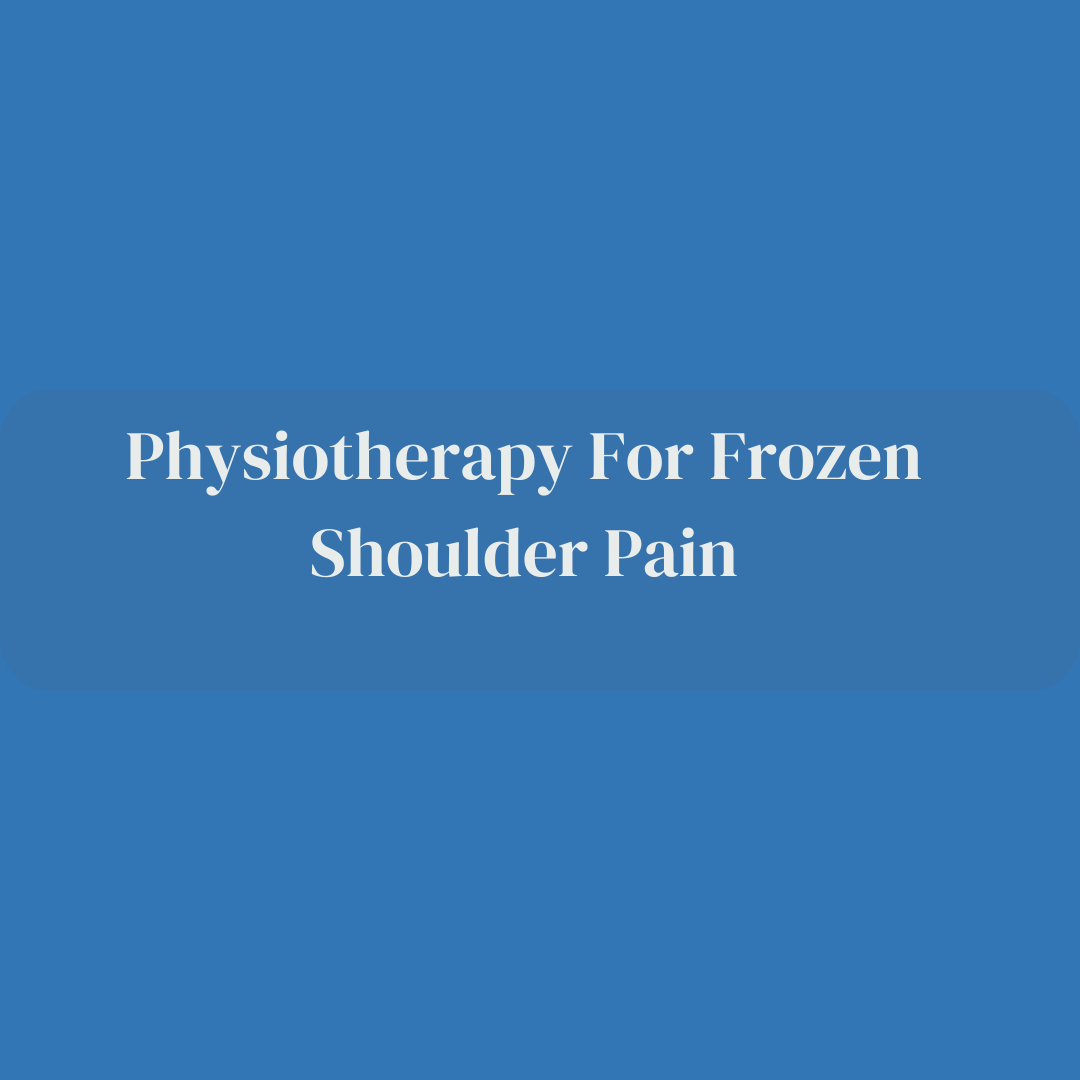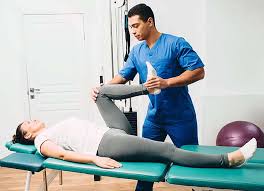Understanding Frozen Shoulder Pain
Frozen shoulder, medically known as adhesive capsulitis, is a condition that affects the shoulder joint, causing stiffness and pain. This condition often progresses slowly and in three distinct stages: freezing, frozen, and thawing. During the freezing stage, pain increases gradually, leading to reduced mobility. The frozen stage sees a plateau in pain, but shoulder movement remains restricted. Thawing is the final stage where pain decreases, and the range of motion improves.
The Significance of Physiotherapy in Managing Frozen Shoulder Pain
Holistic Approach to Treatment
Physiotherapy stands out as a crucial component in the holistic management of frozen shoulder pain. The tailored exercises and stretches prescribed by a qualified physiotherapist play a pivotal role in reducing pain, improving flexibility, and promoting overall shoulder health. These exercises focus on gradually increasing the range of motion, ensuring a comprehensive approach to recovery.
Targeted Pain Relief Techniques
Physiotherapists employ a range of techniques to alleviate pain associated with frozen shoulder. From manual therapy to ultrasound and heat therapy, these interventions aim to reduce inflammation, ease muscle tension, and enhance blood circulation. Such targeted pain relief techniques contribute significantly to the overall effectiveness of physiotherapy in managing frozen shoulder pain.
Benefits of Physiotherapy for Frozen Shoulder Pain
Restoring Range of Motion
One of the primary goals of physiotherapy in frozen shoulder cases is to restore the shoulder’s range of motion. Through a carefully designed exercise regimen, patients gradually regain flexibility and functionality, enabling them to perform daily activities with greater ease.
Strengthening Muscles
Physiotherapy addresses muscle weakness and imbalance that often accompany frozen shoulder pain. Strengthening exercises target specific muscle groups, promoting better joint stability and preventing future recurrences. This proactive approach ensures a more robust and enduring recovery.
Pain Management Without Medication
Physiotherapy provides a drug-free approach to managing pain associated with frozen shoulder. By combining targeted exercises and therapeutic techniques, patients can experience significant pain relief without relying on medication, minimizing potential side effects.
The Role of Patient Compliance in Successful Physiotherapy
Commitment to Exercise Routine
Successful physiotherapy outcomes heavily depend on the patient’s commitment to the prescribed exercise routine. Consistent and diligent performance of exercises at home, in conjunction with in-clinic sessions, accelerates the rehabilitation process and enhances overall recovery.
Open Communication with the Physiotherapist
Maintaining open communication with the physiotherapist is essential for optimizing the treatment plan. Sharing any concerns, challenges, or progress updates ensures that adjustments can be made promptly, tailoring the approach to the patient’s evolving needs.
Conclusion
In conclusion, physiotherapy emerges as a cornerstone in the effective management of frozen shoulder pain. By addressing pain, restoring range of motion, and promoting muscle strength, physiotherapy offers a comprehensive and sustainable solution. Patients committed to their prescribed exercise routines and maintaining transparent communication with their physiotherapist are more likely to experience successful outcomes. Embrace the transformative power of physiotherapy on your journey to overcoming frozen shoulder pain.
Ready to explore your options for chiropractic and physiotherapy? Contact
SwastyaPhysio today to schedule a consultation and discover the best path to your wellness journey. We’re here to support your health every step of the way.
Banaswadi |
HBR layout |
Kalyan Nagar |
Kammanahalli | Horamavu | Hennur







